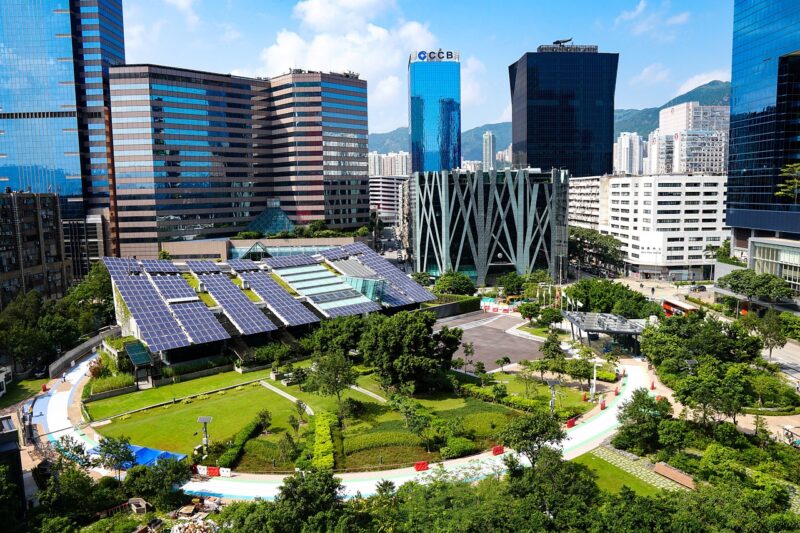How Simple Lifestyle Changes Can Have a Big Impact on the Environment
November 16, 2024

In an era where climate change and environmental degradation are at the forefront of global concerns, many individuals feel overwhelmed by the scale of the problem. However, what if we told you that you could make a difference through simple lifestyle changes? Small, consistent actions can have a ripple effect, leading to substantial positive impacts on the environment. In this article, we’ll explore various lifestyle changes, their benefits, and how you can easily implement them into your daily routine.
1. Understanding the Connection Between Lifestyle and Environment
The choices we make daily—what we consume, how we travel, how we use resources—play a crucial role in shaping our planet’s health. Modern lifestyles often lean towards convenience, which can lead to excessive waste and carbon footprints. By understanding the environmental impacts of our habits, we can make informed choices that contribute positively to the planet.
The following sections will dive into actionable lifestyle changes that can foster a greener, more sustainable world.
2. Reduce, Reuse, Recycle: The 3Rs Approach
One of the most effective ways to minimize your environmental footprint is by adopting the 3Rs approach: Reduce, Reuse, and Recycle. This mantra emphasizes the importance of minimizing waste and conserving resources to promote sustainability.
2.1 Reduce
Reducing waste starts with mindful consumption. Ask yourself:
- Do you really need that new gadget or piece of clothing?
- Can you buy in bulk to cut down on packaging waste?
- Are there single-use products that you can replace with reusable ones?
By consciously reducing the number of products you consume, you directly decrease the demand for resource extraction and manufacturing processes, which contribute to environmental destruction.
2.2 Reuse
Before tossing an item away, consider if it can be repurposed. Here are some creative reuse ideas:
- Use glass jars for storage or as planters.
- Repurpose old clothing into cleaning rags or shopping bags.
- Transform cardboard boxes into organizers or craft materials for kids.
Reusing items helps keep them out of landfills and lessens the demand for new products.
2.3 Recycle
Always recycle any materials that are not reusable. Familiarize yourself with local recycling guidelines to ensure you’re recycling properly. Common recyclable items include:
- Paper and cardboard
- Plastics labeled with recycling codes
- Metals and glass containers
By following the 3Rs, you can significantly cut down your waste production and lessen your impact on landfill overflows.
3. Mindful Energy Consumption
Energy consumption fuels our daily lives but often at great environmental cost. We can adopt strategies to minimize energy usage effectively:
3.1 Switch to Energy-Efficient Appliances
When replacing appliances, choose energy-efficient models that consume less power, have the ENERGY STAR label, and use less water. Though they may have a higher upfront cost, their long-term energy savings will outweigh the initial investment.
3.2 Unplug and Power Down
Many gadgets consume energy even when they’re turned off. This is known as “phantom load.” Unplug devices when they’re not in use, or use smart power strips to help cut off electricity completely.
3.3 Leverage Renewable Energy
If it’s an option in your area, consider investing in renewable energy sources like solar panels or wind turbines. These can drastically reduce your carbon footprint and save money on your utility bills over time.
4. Sustainable Transportation Practices
Transportation is a significant contributor to carbon emissions. Here’s how you can make greener travel choices:
4.1 Walk, Bike, or Use Public Transport
Opt for walking or biking short distances whenever possible—this not only cuts emissions but also promotes personal health. For longer commutes, make use of public transit systems like buses or trains instead of driving.
4.2 Carpooling and Ride-Sharing
If you must drive, consider carpooling with friends or family, or utilizing ride-sharing options. Reduced vehicle usage means fewer emissions produced.
4.3 Drive Energy-Efficient Vehicles
If you’re in the market for a vehicle, consider investing in an electric or hybrid model to minimize fossil fuel consumption.
5. Adopt a Sustainable Diet
Our food producers have significant environmental impacts, from generating greenhouse gases to using vast amounts of water and land. Transitioning to a more sustainable diet can make a big difference:
5.1 Eat More Plant-Based Foods
Plant-based diets have a smaller carbon footprint compared to diets high in meat and dairy. Start by seeking alternatives such as lentils, beans, and tofu, which are rich in protein and more environmentally friendly.
5.2 Purchase Local and Seasonal Produce
Buying local produce reduces transport emissions and supports local economies. Eating seasonal fruits and vegetables can decrease the environmental impact of out-of-season imports.
5.3 Limit Food Waste
Plan your meals, store food properly, and utilize leftovers creatively to minimize waste. Consider composting food scraps to return nutrients to the earth.
6. Create a Sustainable Home Environment
From energy usage to waste management, there are various aspects to consider for an eco-friendly home:
6.1 Use Eco-Friendly Products
Opt for biodegradable cleaning products, natural toiletries, and sustainable materials to reduce harmful chemicals from entering the ecosystem.
6.2 Water Conservation Practices
Install water-saving devices on faucets and toilets, take shorter showers, and fix leaks promptly to conserve this precious resource.
6.3 Encourage Green Living with Your Family
Involve your family members in sustainable practices. Create family goals to reduce waste, save energy, or participate in local environmental initiatives together.
7. Cultivating Eco-Consciousness
Awareness is key to driving change. Here’s how to cultivate an eco-conscious mindset:
7.1 Educate Yourself and Others
Stay informed on environmental issues and share your knowledge with others. Discuss the importance of sustainability with friends, family, and social media networks.
7.2 Support Eco-Friendly Initiatives
Join local environmental activism groups, support businesses with sustainable practices, and advocate for policies that promote ecological health in your community.
7.3 Lead by Example
Your actions speak volumes. By implementing these lifestyle changes, you inspire those around you to follow suit, multiplying your efforts for a more sustainable future.
Conclusion
Making simple lifestyle changes can lead to profound impacts on the environment. By adopting principles of reducing waste, conserving energy, and promoting sustainable practices, you can help combat climate change and preserve our planet for future generations. Remember, every small action counts, and together, individual efforts can cultivate a healthier Earth.
So, start today by choosing a change you can commit to, and watch as it creates a wave of positive environmental transformation in your life and beyond.







